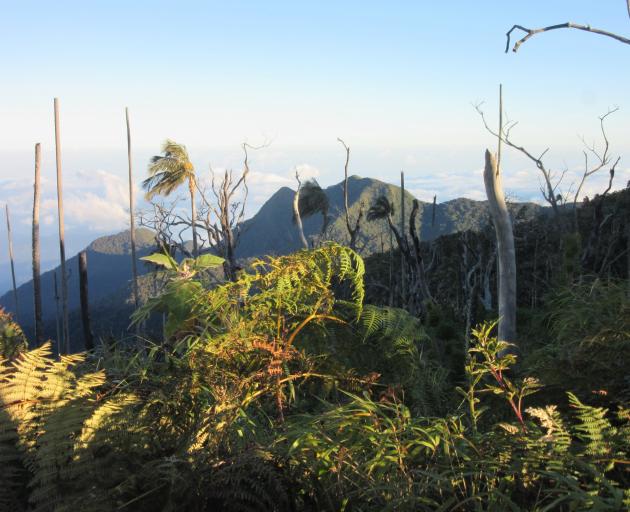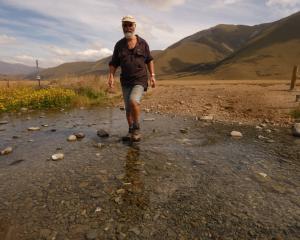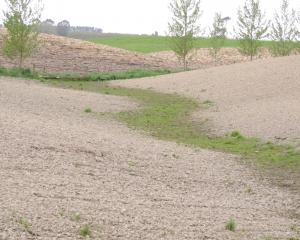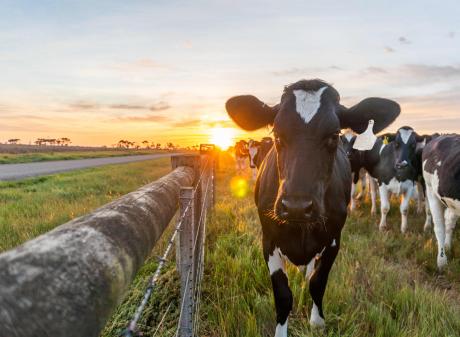
It's July 2022. "Why don’t we have Christmas with the family in Colorado," I say.
"I think we should go to Colombia," he says.
Rapidly I sort through elusive memories — what do I actually know about Colombia? I know it’s spelled with an O, not a U. I know it’s in South America. I know it has (or had) drug lords and civil war and danger.

Why does he want to go there, particularly, I ask.
Colombia has the most species of birds of any country, he replies.
I visit e.bird. New Zealand has 206 species. Even Australia has a mere 828 species. There are almost 2000 species of birds in Colombia. Whoa.

I consult Wikipedia. There are 58 cities in Colombia that are larger than Dunedin. I’ve only ever heard of Bogota, population 8 million. The whole country has 80 million people, a lively blend of indigenous Amerind, African, and Spanish heritages.
I know a little Spanish but it’s time to revise. I load up Duolingo and start learning to say: "this dog is clean" and "I never eat lunch with my siblings" and other sentences that no traveller ever needed.
We book our tickets and our birdwatching tour. The itinerary arrives with names of total unfamiliarity: Manizales, Cali, Buga. We pay for it all, somehow, and his lordship orders the Colombian bird book. It must weigh a kilo!
Every day I go to e.bird and choose a bird picture from the Colombia list, then email it to his lordship for identification. We call it "Colombirdle."

I ask a friend to pick and freeze my plums, which will fall while we are gone. I learn to say: "this black skirt costs too much". We go out to buy jungle trousers — light coloured, lightweight, can be tucked into socks if it is buggy. His lordship makes notes in the 2kg bird book.
November passes slowly. December speeds up, and our suitcase choices keep changing. We seem to need a lot of first aid items. We pack cool clothes; we pack warm clothes. We pack binoculars and cameras. I can now say: "the green trees are swaying in the wind."
I pack the 3kg bird book. No, he says, the bird book must go into the carry-on backpack. "So I can study on the plane," he says. "Just in case the luggage goes missing," he says.
We weigh the suitcases. I email my family asking if we can borrow clothes. I specify that all Christmas presents must weigh less than 50g. Much worrying and rearranging takes place, but in the end we get on the plane and leave New Zealand.

Bogotá, it turns out, is high. 2600m high! People get sick just arriving here. But as we had been in the Rockies, we were okay. We meet our bird guide, Edwin from Whitehawk Birding. He will literally do everything he can for 17 days to make sure we see birds. All the birds.
We fly to Cali (a tropical city of over 2 million), and head into the hills. The bird lodge we start at is called La Florida. While it is only 18km from Cali, it takes a long time on bouncy backroads.
All over Colombia we see the term "aviturismo" — bird tourism. Birds are a big deal here. We see very few tourists in Colombia. Every single one we do encounter is wearing binoculars. In several places we meet a group of birders from Darwin who always travel together, accompanied by their cooler of wine and beer.
A birding lodge is quite distinctive — eco-friendly, with a flower-planted garden to attract small birds. There are feeders, fruit and nectar replenished all day. Bird-named rooms, bird decorations, birds everywhere — except the food. Our favourites were La Florida near Cali, Hacienda El Bosque and Paraiso Verde, both near the mountain city of Manizales.

We hear a man in the woods calling "Venga, venga, venga…" meaning Come, come, come. Later we will sit with him, waiting and waiting for a shy little antpitta to hop in, cock its head, and take a worm or two from the log while we hold our breaths with excitement.
Antpitta? I hear you ask. They are among the many birds that are only found in South and Central America (his lordship calls this area the Neotropics, which makes him sound very geographic).
There are tapaculos, Tinamous, and toucans, but especially antbirds of all kinds. Antwrens, antshrikes, ant-this and ant-that. So called because they follow army ant swarms and eat the bugs that are fleeing that devastating force. These neotropical specialities are what make real birdwatchers twitch.
"Twitchers" are birdwatchers who spot the bird and tick it off and race on to the next one. One such came all the way to Colombia just to see the five species he did not already have — he showed no interest in any other bird he saw.

Of course, birders also count and keep track. Edwin has provided a 17-page closely typed list of all the birds we might see, and each evening we go through and tick off what we saw that day, with much consulting of the 5kg bird book. We discuss what we’ll be doing the next day, which is sometimes unexpected.
Our trip takes us from the warm Valle de Cauca up into the Andes, higher than Mt Cook! At 4200m near Los Nevados, we see the buffy helmetcrest, a special mountain hummingbird with an iridescent purple beard. I buy a woolly Colombian hat, it’s so cold.
In contrast, three days later we are in the jungle. Sticky with sunscreen, insect repellent and sweat, we trudge through thick mud along paths lined with thorns, stopping to squint up at birds flitting among silhouetted leaves. We spy a jacamar (cousin to a kingfisher) while stopped to admire an iguana.
One day we walk through dry desert scrub, dodging low thorn trees. We are delighted with the thick-knees, cardinals, and even pygmy owl. I personally am very taken with the colourful complex grasshopper-like bugs, as big as a harmonica, that fly away with a mechanical buzz when I walk past. Not birds, though. Get back on task.

One day we get up at 3am and drive on the worst road I have ever encountered — rutted and genuinely awful — to get up the mountain by daybreak, to see some special rare parakeets. Dawn in the mountains is superb, with a setting full moon. We do see parakeets but not the special one. What really astonishes us is how many people use this awful road — running, mountain biking, motorcycling… unbelievable.
One morning we spend ages parked in a bit of forest, listening to a bird we cannot see. Recourse to the 6kg bird book informs us that the rosy thrush-tanager is about the size of a blackbird, black and an unusual pinkish red, and "notoriously skulking". There it is, singing enthusiastically, but can we see it? No indeed. Three (well, two and a-half) experienced birders were completely bamboozled. After an hour, we sadly start walking back to the truck, when suddenly his lordship catches a glimpse of that pinkish-red through the leaves! We have spotted it! Just splendid, sitting and singing, as rosy as can be.
Every evening we choose our bird of the day. It might be a bird we really had to work for, like the rosy thrush-tanager. It might be the prettiest little chap, like a green honeycreeper or a golden tanager or a blue dacnis (I really recommend you look them up online, so beautiful!). Or it might be something unusual, something you always wanted to see. Perhaps the bizarre pipe-cleaner-adorned hoatzin, looking like the dinosaur it really is.
On our last day we clock in one final hummingbird and count up, checking the 7kg bird book. Colombia has 1954 bird species and we saw 567 of them. Most were new to us, some provided all-new families for our lists. They were all wonderful.

And coffee. Colombia grows coffee, and it knows what to do with it. Even crummy cheap paper cups of coffee in the airport were excellent. Plus: chocolate! Frothed up with milk using a traditional wooden churn, hot chocolate was glorious, not too sweet and often a bit spicy. We hardly missed tea.
Colombians seem to be universally polite and friendly, greeting everyone they meet. They shorten normal Spanish greetings to just "Buenas" which means good. And it is. Good people, good food, good birds and an overall good vibe.
Colombia is no longer a blank slate to me. Trisected by mountains, cold up high and hot down low, stretching across the equator from sea level to the high Andes. It is covered with gorgeous forests and gardens, various animals and especially birds. There are birds in the city, birds in the gardens, birds in the forest, birds on the ground, birds in the air, birds on the water, birds everywhere.
It’s not overly touristy, yet, but as people realise the drug wars are over, it will be. It deserves to be.















